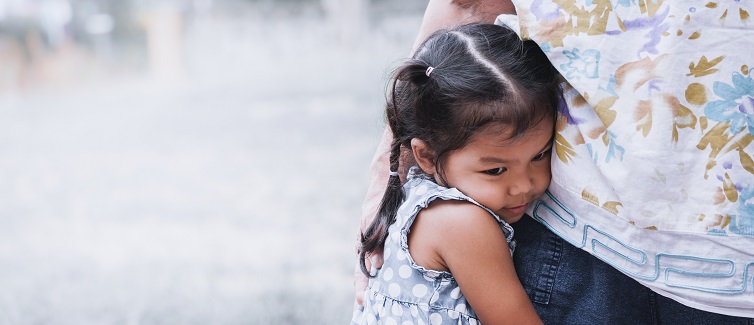That children worry about or fear certain people, places, or things from time to time is common. Maybe they don’t like clowns, or going into a dark room, or the barking dog next door. But some fears can turn into phobias, and knowing how to tell the difference is the first step in getting your child help.
What Is a phobia?
A phobia is a type of anxiety disorder. The National Institute of Mental Health (NIMH) defines a specific phobia as an intense, irrational fear of something that poses little or no actual danger.
Types of phobias in children
In general, phobias include fear of specific — or types of — people, places, situations, animals, insects, or objects.
Common phobias in children include fear of:
- Animals (zoophobia).
- The dark (nyctophobia) or of enclosed places (claustrophobia).
- Seeing blood (hemophobia) or medical procedures involving needles or injections (trypanophobia).
- Flying (aerophobia).
- Germs (mysophobia or germaphobia) or of getting a disease (nosophobia).
- A parent, sibling, or pet getting sick, injured, or dying (thanatophobia).
- Heights (acrophobia) or water (aquaphobia).
- Spiders (arachnophobia) or insects (entomophobia).
- Thunder and lightning (astraphobia).
Risk factors for phobias in children
Phobias usually start in childhood and adolescence and continue through adulthood.
What causes children to develop a specific phobia is not known. A fearful first encounter with the object or situation may trigger a phobia in some children. Phobias can run in families, so some children may have a genetic predisposition to them.
- An estimated 19.3% of teens ages 13 to 18 had a specific phobia, according to the NIMH. About 1% had a phobia so severe that it interfered with their daily lives and routines.
- Among teens ages 13 to 18, phobias are more prevalent in girls (22.1%) than boys (16.7%).
Never Miss a Beat!
Subscribe to Our HealthBeat Newsletter!
Thank you for subscribing!
You can now select the specific newsletters you'd like to receive.
You are already subscribed.
Subscribe to more newsletters in our email preference center.
Sorry, an error occurred. Please try again later.
Get Healthy Tips Sent to Your Phone!
What Is the Difference Between Normal Fears and Phobias?
The difference between normal fears and phobias is the severity and persistence of the fear.
With normal fears, children can overcome them with encouragement and some simple assurances from parents and caregivers. A quick check of their closet for goblins is all they need to help them get to sleep, for example.
With phobias, the specific fear is so extreme that your children will have severe anxiety just from thinking about it. It’s a lasting dread and terror. Children with phobias will do everything they can to avoid their phobia’s specific object or situation.
Signs Your Child Has a Phobia
Symptoms of phobia resemble those of severe anxiety. Look out for these telltale signs when your child faces their fear:
- Crying or throwing tantrums.
- Increased heart rate.
- Sweating or feeling chills.
- Trembling or shaking.
- Shortness of breath or complaining they can’t breathe.
- Chest pain or discomfort.
- Upset stomach.
- Feeling dizzy or faint.
- Freezing or being clingy.
- Telling you they feel like they’re going crazy or dying.
- Avoiding the situation or trying to get away.
Older teens can usually recognize that their fears are irrational and extreme. But younger children may not understand and really believe they are in danger. In both cases, parental support and understanding are important.
Your child can’t simply “not worry” about their fear. They need professional psychiatric help to manage it as they would for any anxiety disorder.
How Are Specific Phobias Diagnosed?
To diagnose your child with a phobia, their doctor will conduct a clinical interview and take a full medical, social, and psychiatric history. They will use guidelines from the Diagnostic and Statistical Manual of Mental Disorders, 5th Edition (DSM-5) by the American Psychiatric Association.
The DSM-5 classifies a specific phobia as an anxiety disorder. Its diagnostic criteria includes:
- Marked fear or anxiety about a specific object or situation.
- The phobic object or situation almost always provokes immediate fear or anxiety.
- The fear or anxiety is out of proportion with the actual danger posed by the specific object or situation and to the sociocultural context.
- The phobic object or situation is actively avoided or endured with intense fear or anxiety.
- The fear, anxiety, or avoidance causes clinically significant distress or impairment in social, occupational, or other important areas of functioning.
- The fear, anxiety, or avoidance is persistent, typically lasting for 6 months or more.
- The disturbance is not better explained by the symptoms of another mental disorder.
Treatment for Childhood Phobia
Getting treatment for phobia can help your child learn to overcome their fear so it doesn’t interfere with their routines or daily life.
Treatment for phobia includes psychotherapy, medication, or both combined.
Editor's Note: This article was originally published on , and was last reviewed on .
Sources
About Pediatrics
From nutrition to illnesses, from athletics to school, children will face many challenges growing up. Parents often will make important health care decisions for them. We hope to help guide both of you in that journey. UPMC Children’s Hospital of Pittsburgh is a national leader in pediatric care, ranking consistently on U.S. News & World Report’s Best Children’s Hospitals Honor Roll. We provide expert treatment for pediatric diseases, along well-child visits, urgent care, and more. With locations across Pennsylvania, Maryland, and West Virginia, you can find world-class care close to home. We also work closely with UPMC Magee-Womens Hospital, a national leader in care for newborns and their mothers. Our goal is to provide the best care for your children, from birth to adulthood and beyond. Visit our website to find a doctor near you.

